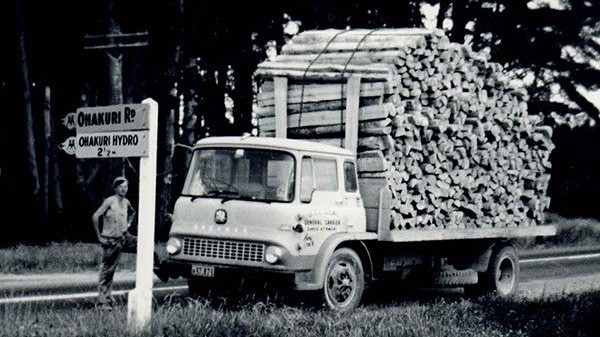
Every now and again there are characters you meet on the journey of life, individuals that leave a lasting impression, and make you reflect just a little. Ray Kerley is one of those colourful personalities.
A wet Saturday in June of 2020, we found ourselves in Atiamuri having a chat to twins Hayden and Dion Kerley about their recent purchase, The Lion King, a TGX35.640 MAN stock unit that had been selected for our Top Truck poster.
As we chatted to the lads, they jointly recommended “you should be interviewing our Dad, he’s the one that started all this, and gave us the kickstart in the transport game. He’s been trucking now for near on 60 years. He’s got a good story to tell.”
That was all the encouragement we needed. So while we sat out the back of the Bullring, Atiamuri’s fabled landmark, enjoying a bowl of deep fried sausage bites and an ale, we got chatting to the boys’ Dad, Ray Kerley.
Ray began regaling us with his story, life on the farm growing up, his start in the transport industry and more. We quickly realised Ray is an individual who was raised with an infallible work ethic, and one who does not shy away from hard work or a challenge. A character with a quick wit and true Kiwi sense of humour who is thankfully still well grounded, honest and direct. Ray’s story truly needed telling, as there are some out there in this day and age that stand to gain a thing or two reading about Ray’s no nonsense, get-off-ya-tush and make-it-happen attitude.
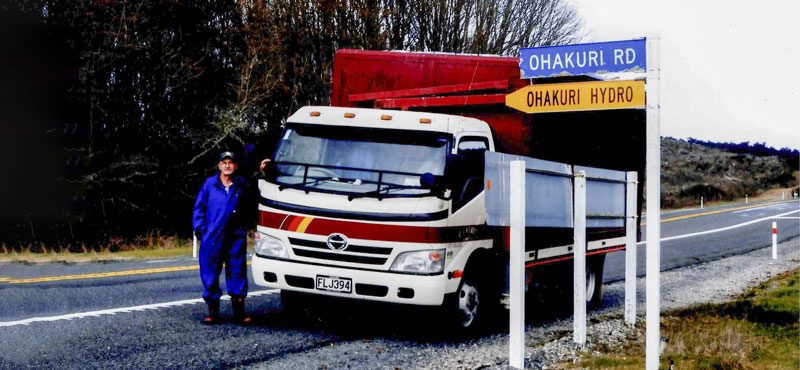
Farm fresh
We start at the beginning of 1950 when Ray, then nearly five, moved with his family to a dairy farm halfway between Matiere and Ohura in the little settlement of Nihoniho. “It was 72 acres [about 30ha in today’s world of metrics], and we were milking 37 cows,” Ray recalls. “Later, Dad added a sheep block of 200 acres, about three miles up the road from the original farm.
“An opportunity came Dad’s way to purchase 450 acres from the Crown, which sat in behind the existing 200 acres. It was a block of native bush in need of breaking in. He paid five shillings an acre for it. As you can imagine, we spent a lot of time working the land, clearing much of it to convert it into a productive grazing farm.
“I seriously liked trucks as a young fella and gained a solid connection to them growing up on the farm. I would go out after getting home from school and help with the hay-making. Jack Turner from Matiere would come to the farm to do the hay for Dad as well as our neighbours. I was only about 10 or 11 years old. One of Jack Turner’s drivers, Johnny Adams, would let me steer the truck around the paddock while they picked up the hay.
“As I got older, I progressed to lining up the bales ready for the loader to lift them onto the trucks. It was great after-school work. I really enjoyed being there, just keen to be around the trucks. I left school at 14 and worked full-time at home on the family farm until I was almost 18.
“Unfortunately, the dad-and-son thing didn’t really work out. I wasn’t making enough – I basically got paid the pig money from the skim milk. It was time to move out and work for some real wages.”
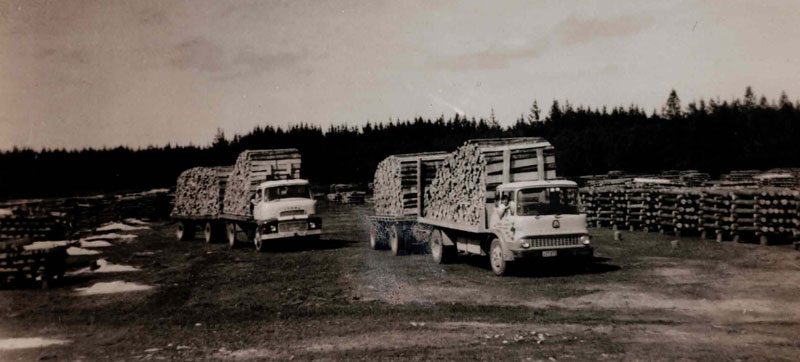
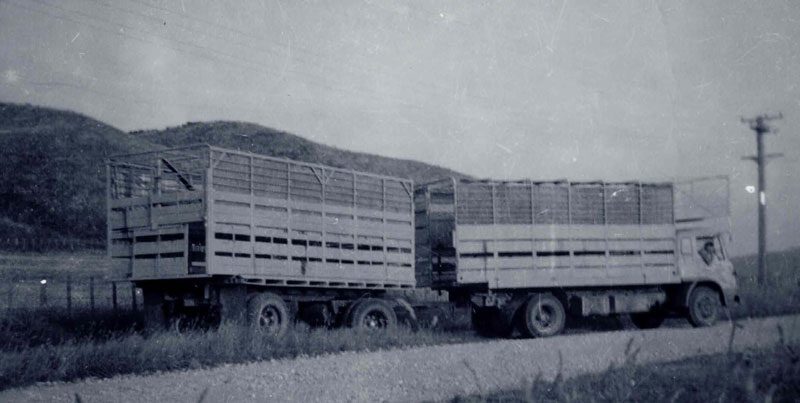
18, and into it
“Looking back, it was natural that as soon as I turned 18, I would be off to work as a driver for my brother-in-law, Arthur Adams, at ASL Adams on Ohakuri Road in Atiamuri. He did all manner of rural work with his trucks – shifting livestock, fertiliser, firewood and posts from the Central Plateau forest for Pinedale’s treatment plant in Putaruru. There was lots of variety.
“First, I needed my licence. So it was off to Tokoroa to do the test, literally on my 18th birthday – 13 April 1963. My very first day of working for my brother-in-law, I did my practical test in a TK Bedford, passed it first go, and seven shillings and sixpence later, I had my HT.
“The next thing I knew I was off on my way to my first pick-up – a load of wool out of Cyril Clayton’s woolshed on Ohakuri Road. It needed to be delivered to the Kinleith rail yards and loaded into an LA rail wagon bound for the Wanganui wool stores. The first thing we had to do when we got to the wagon was sweep it out. The reason for this is that there was coal dust left over from the last trip, and that does not mix well with wool. So there was a bit of work to prep the wagon and then hand-load the wool on as well. That was all in a day’s work for a truck driver back then. It wasn’t a bad effort for a rookie’s first day out.
“The work for my brother-in-law taught me an awful lot. I went to all kinds of interesting locations. And from day one, it also had me dragging around a 16ft trailer. It was straight in really, boots and all.”
Taumarunui calling
“In 1964, I decided to move to Taumarunui and start working for Wally Hayes Transport – another rural carrier carrying virtually everything. We did a lot of loads over to Turangi for the Ministry of Works from the Taumarunui rail head.
“At the time, construction of the Tongariro hydropower scheme was in full flight across the Central Plateau. Taumarunui was the closest that rail could deliver the supplies destined for Turangi, so that’s where the trucks took over and completed the job. It all came by rail – reo bar, cement – all the supplies needed for the scheme. So we sure had a variety of loads.
“The Italians brought in to build the tunnels were a hardcase bunch. They were chasing the nurses at the Taumarunui nurses’ home. I was going out with a nurse at the time, so I’d see them coming over from Turangi, looking for company and trying out their luck.
“While working for Wally Hayes, we also carted a lot of bagged cement for the Western Bays Road from Kuratau through to Whakamaru (the western side of the lake). The road was being sealed to allow better access to all that farmland, most of it being farmed by Lands and Survey at the time.
“That road has got a heap of cement in the base of it mixed with pumice, and it was all carted over the hill on those Wally Hayes trucks. This was all loaded/ unloaded by hand, out of the wagons, onto the trucks, and unloaded in the same way. No forklifts in those days. You knew you had done a day’s work back then as the cement was packed in 40lb bags.
“We also delivered a lot of bulk fertiliser to airstrips around the district from the railhead for the top-dressing aeroplanes. It made for some interesting and challenging places to cart into – up steep, gnarly tracks to reach the airstrips.”
Best of both
“It was a good time but a short time with Wally Hayes because I knew I had a livestock job coming up working with Colin Poole at C R Poole. I eventually got my start with Colin Poole in 1965 on a petrol-powered Commer. I was finally on livestock. I had always wanted to work with livestock – just history growing up on the farm, I suppose.
“I ended up on a Leyland Hippo doing stock. I had my own two dogs as well, so the lessons learnt from my stock-handling days on the farm paid off.
“While at Colin Poole’s, the government passed a law where you had to have a separate trailer licence if you towed a heavy trailer. I would have been about 20 or 21 at the time.
“Luckily for me, if you had been towing trailers before the law change, you did not need to sit the test; you just had to head into your local council and get your new trailer licence stamp on your truck licence. I fitted that criterion. So off I went into Taumarunui and got the stamp, no troubles at all.
“The funny part is that I have never actually sat a test for my heavy trailer licence. It was quite literally given to me.”
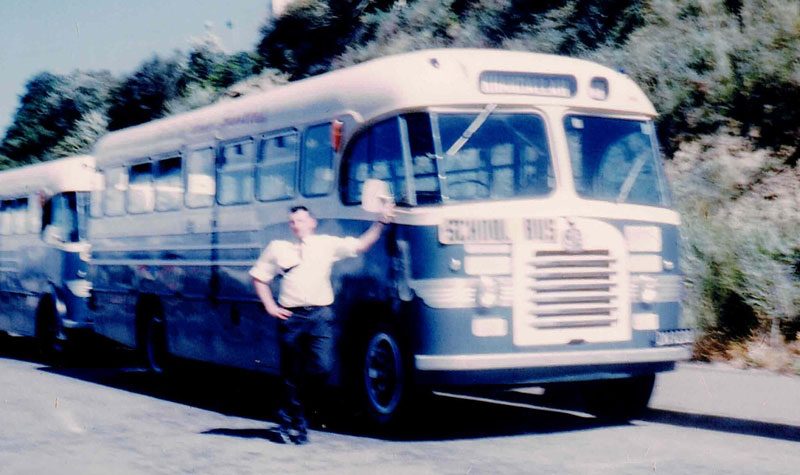

Trucks to buses
“About two years later, I decided to find a cleaner and tidier job, and one that loaded itself. So, off I went to speak with Jack Hitchman (leading driver) of the Taumarunui Road Service Depot. He let me use an S-model Bedford bus to sit my bus and passenger service licence’s. I booked the tests and passed both. Securing these had me moving to the big city of Wellington. I took up residence at the Thorndon single men’s railway camp and started working out of platform nine at Wellington Central Railway Station. This placement had me on various routes, as well as school bus runs.
After a stint on the omnibuses, I moved across to the service car roster. Here, I was doing day trips, running up to Taihape and Wanganui and return. “It was a great job, and I enjoyed the time, but change is always just around the next corner. In 1968, at 23, I got married to that nurse and headed back to Taumarunui.
I had received a fresh job offer from Colin Poole to return and drive again for him, with a house thrown in as part of the deal.”
Buses to trucks
“Starting back with Colin, I was given a later-model Leyland Hippo, and I was back into the stock transport.
“Things were beginning to change with the way rail freight had been protected, so the distances we could travel began to increase. We found ourselves regularly taking loads all the way through to Fletchers at Patea, Borthwicks of Waitara, and the Imlay works at Wanganui.
Colin had a great business, doing all kinds of interesting work in the area, so in the off-season, you could end up doing all sorts. I got put on the Leyland Crusader a few times, doing deck logs, all native, running down the Burma, onto the Punga and into the mill at Mananui. It was big gear in the day, 250hp, a big step up on the Hippo’ at 150hp.
“We did a lot of work on the trucks ourselves – you had to. There was an old Hippo in the fleet that had done its time on the logs (which was replaced with a brand-new Leyland). The old Hippo’s cab was absolutely shot, so Colin tracked down a good secondhand cab, and I did the swap over for him in our own workshop, including the wiring. It’s just what we did to get the job done. The truck was then fitted with a flat deck and stock crate.
“There was a lot of variety for me working for Colin. And because I had a farming background, there were days that Colin’s brother Ian would phone and see if I was available to help on the family farm.
The shearing gang would be there, so I would head out and help as a rousey and also do the wool pressing in the shed. There was never a dull moment.
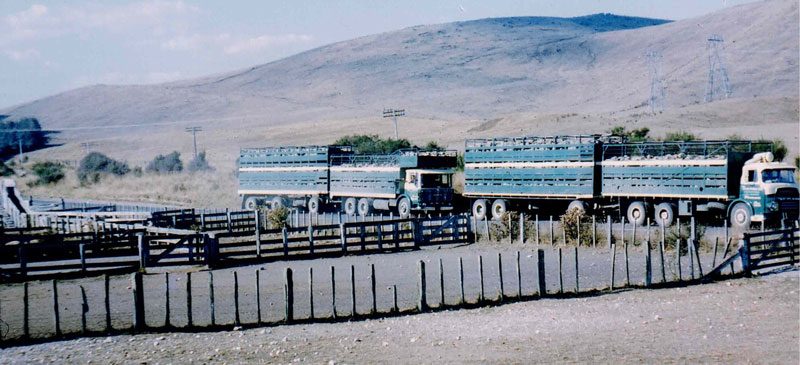
A turn of hand
“While with Colin, an opportunity to return to New Zealand Road Services came my way. They were wanting to put another coach and driver on in Taumarunui, as the rail car service from New Plymouth to Auckland was being withdrawn. So I started back with the New Zealand Road Services on the Taumarunui-Auckland express run for a change of scenery. The roster also included runs out to Taihape and Rotorua,
“After a while, I decided to take a break away from full-time driving completely and started doing relief driving for Road Services when drivers would call in sick or were away on holiday. I also did relief work for Colin Poole.
“Among the part-time driving, I also went out on my own doing fencing as well as shearing. Dad had sent me away to a shearing school when I was 16. New Zealand shearing legend Godfrey Bowen signed me off. My best tally was 327 on ewes.
I also entered into the national fencing competitions one year at Mystery Creek. Unfortunately, I did not make the finals, as I was too slow. But I got good points for workmanship.
“So working in both disciplines was, fortunately, no trouble at all.”
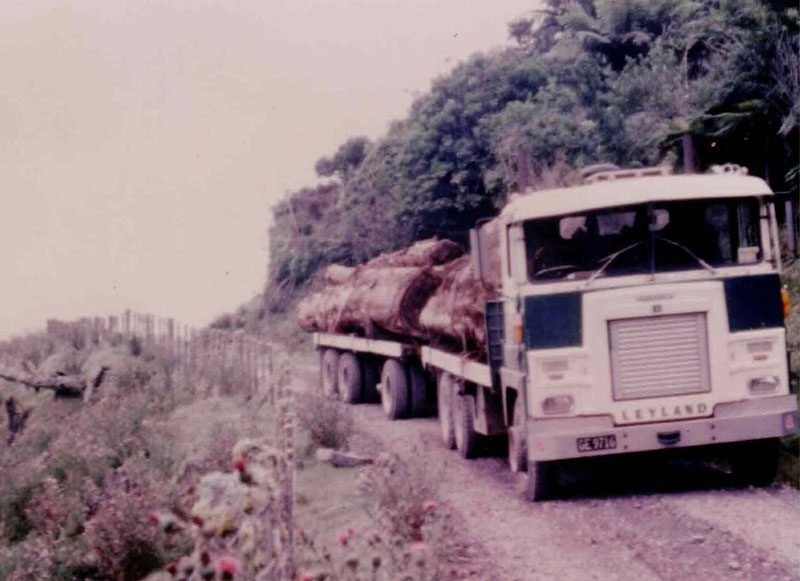
Turmoil breeds opportunity
“At about this time, my marriage was on the rocks and in the end, the wife left and went to Perth. I got custody of my three kids; the boys would have only been about two and a half years, and my daughter was four and a half, so still very young.
“They were challenging times, and in 1978, I decided it was time for a big change. I sold our house in Taumarunui, and we headed out to Kawhia. I purchased the local IGA and converted it into a Four Square.
“There was a need with the business for a small truck to collect supplies in Hamilton and transport them back to the store. So I purchased an old J-model Bedford ex-Homestyle Bread that was perfect for the job.
“In 1982, I was made an offer by a prospective purchaser who wanted to buy the store from me. So, once again, big change. We sold the Four Square business at Kawhia, and moved into a house in Napier that was part trade for the Kawhia business.
“At the same time, the Old Lantern tearooms came up for sale at Atiamuri. It came with 40 acres of land, so it was a perfect mix of a home and a business for us. Sold!
“A short time later, while working the tearooms, I had the opportunity to purchase a rural delivery run (RD1 Atiamuri). This proved to be a pivotal move back towards the road transport sector.”
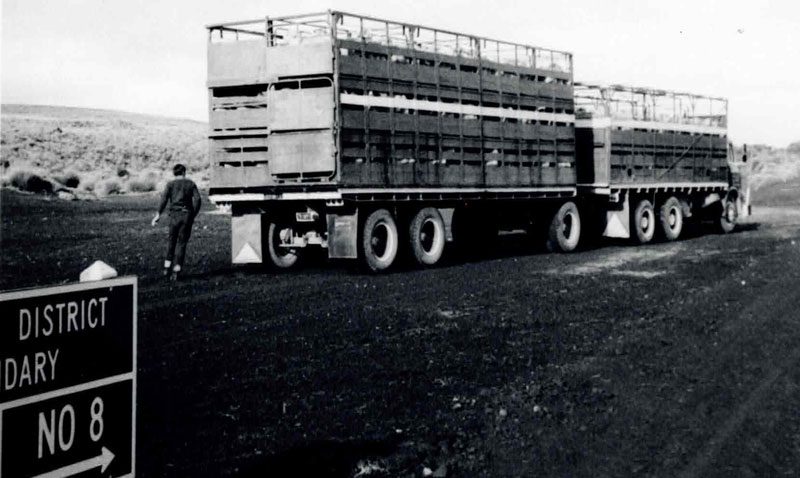
Goods & service
“I needed to have a goods service licence to operate the RD run. The goods service licence with time would prove extremely valuable. After a while, I also ended up with the RD2 Atiamuri run as well. Eventually, they were combined into one.
“Alongside this, I had a milk run servicing the Atiamuri and Ohakuri hydro villages.
“It was definitely busy times raising the family, running the RD runs and the tearooms. I kept the tearooms running by employing local farming housewives, as well as college-age girls who worked in the holidays. It was a lot of staff, but great staff and they all did a great job.
“The automation of the hydro dams saw the end of the workforce, and in turn, the villages supporting them. Then, changes to where the mail was sorted saw me sell my RD run to an operator based in Rotorua, Simon Weir.
“Not long after – in April 1990 – I sold the tearooms as a standalone business with a separate title and kept the remaining 39 acres.
“Until then, we had been living in the back of the tearooms but, suddenly, we needed a home. I found the house we have now, up for removal in Tokoroa and had it shifted onto the land here behind the tearooms, and we are still here to this day.”
R.J. Kerley – General Carrier
“After selling off the run and the tearooms, I still had my goods service licence, so I went out and purchased a small Ford Trader and had a dog trailer made for it.
“A little later, I needed an upgrade, so a new 210 Nissan Diesel was the go, which I purchased from Dale Greaves. I had it fitted with a deck and stock crate, and that really was the beginning of R.J. Kerley, general carrier.
“I started out moving anything – stock, hay, wool, farm supplies. The phone would ring, and it would be another job, and you would just answer the call. With the work, the business naturally grew. The more you did the more you got because word would spread throughout the area.
“As the workload increased, the need for bigger gear also increased. From the 210 Nissan Diesel, I purchased a 340 Nissan Diesel, then a 380 Nissan Diesel. Then it was on to an ERF 500, and then along came the FY Hinos.
“Our work was certainly varied. For some time, we had a contract collecting bagged pinecones from Murapara. They were needed for their seeds. We would collect approximately 600 bags per load from the orchard and then take them down to Amberley. There was a plant there that specialised in processing the cones – sometimes two loads a month.
“For the trip home it was a backload of posts out of Richmond back to Goldpine in Putauaru – a good run all round.
“We also had the slink run for quite some years. That literally started with me going out at night after the shop was closed, and after the kids were in bed, for a bit of extra coin. I would jump in the little Ford Trader and run around the local farm gates to collect the dead calves and bring them back here to a dump site.
“As time went by, we got given more districts, it just grew, so not only were we doing the local- gate slinks, but we ended up getting all the dumps in neighbouring areas. Galatea, Rerewhakaaitu, Reporoa, Waikite, Ngakuru, Tokoroa and the last pick-up, Putaruru. In the season’s peak, we would be running two truck and trailer loads a day through to Wallaces at Waitoa for processing.”
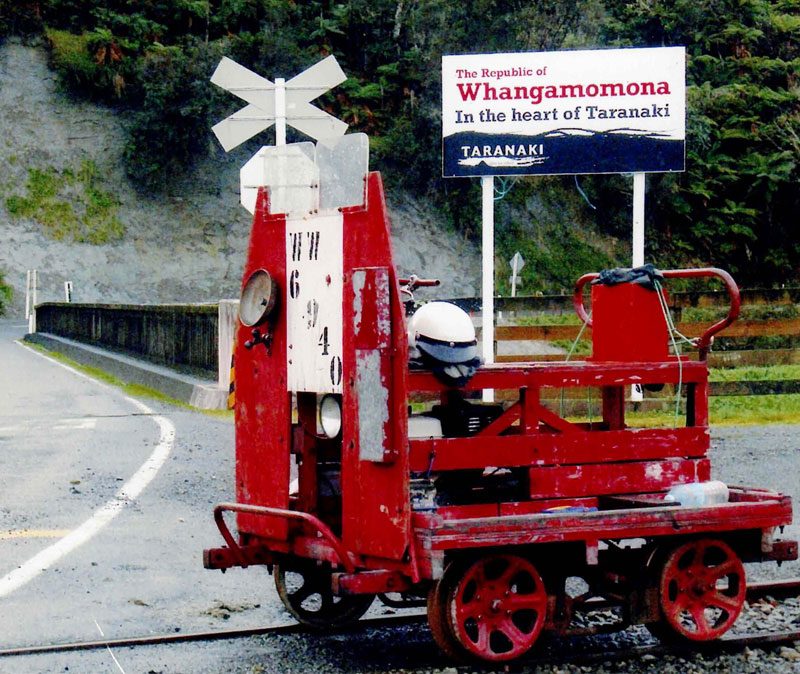
The backbone
Nose to the grindstone, Ray was kept busy building his transport business with little time for socialising. In June 1993, local clients Joyce & Geoff Raynel, who knew he was on his own, lined up Ray with a blind date for the yearly Tirohanga winter ball.
It was a secret that all the locals knew about. Jillian, a Matamata girl, recalls the night. “We had a standing ovation at the hall door as we walked in. Talk about a trial by fire!”
Thirteen days later, Ray took Jillian to Te Awamutu to meet his mother, then on to Hamilton for an engagement ring. This was followed a short time later by a wedding at the Matamata Racecourse.
“Jillian has been my backbone for almost 30 years, running the office, yardwork, farmwork, juggling family commitments, and, on top of all that, training to be a registered nurse,” says Ray.
Jillian has now worked part-time for nearly 18 years at the old Waikato DHB in the Tokoroa Hospital Emergency Department, fully committed to the great cause of looking after those in their greatest times of need.
Contacts to contracts
For 28 years, Ray was also a livestock buyer. It was a situation that led to an opportunity.
“I had already been trucking stock into Richmond’s plants. The North Island livestock manager contacted me, offering a commission-based stock-buying position for the South Waikato. This opportunity allowed me to keep the trucks busy because by this time, my boys were working for me driving my trucks.
“Quite some years later, and looking for a change in companies as a livestock buyer, I spoke with management at Wallace Corp. This was where the slinks had been going, and I wanted to see if I could work for them as an agent for their beef processing plant. As it happened, the timing was perfect because they had just started processing bobby calves, so they were like, ‘that’s fine, Ray’, so that was the start of that contract.
“Two years later, with a change in ownership, I could see after 10 weeks that the new organisation was not for me. So I called up UBP (Universal Beef Packers) over in Te Kuiti and arranged to meet with their manager, Hamish MacDonald. I told him what had happened and what I was looking for, and he took me on right there on the spot, and with that, I was trucking in stock the very next day.
“I was almost 10 years with UBP, and when I retired just before the first Covid lockdown, they were so pleased with what I had contributed to the company, they sent Jillian and I to Singapore on a week’s holiday, all expenses paid. I did not expect that, but it really was a great working relationship.”
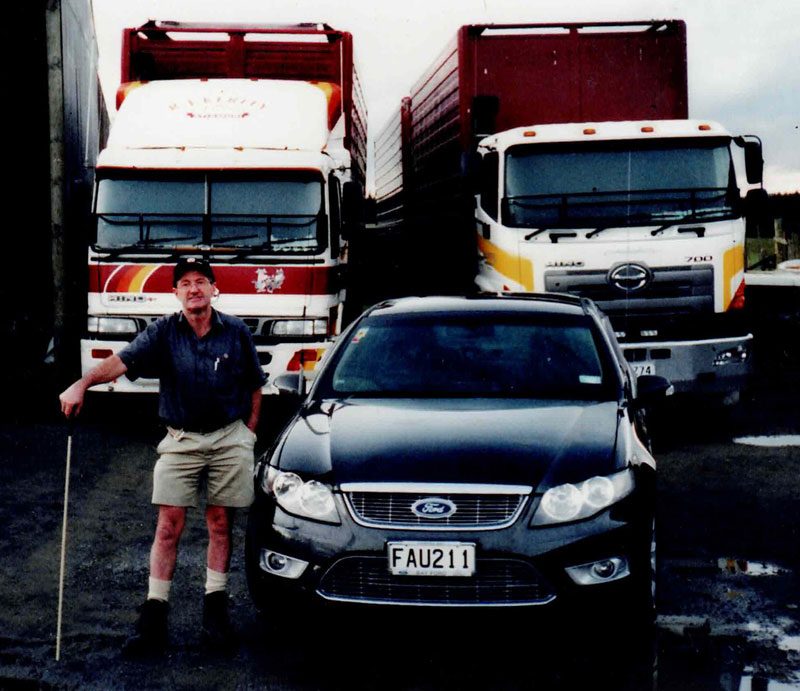
Green pastures
“I have retired, but in some ways, I am busier now with work in retirement than I was when I was working.
“I am still a member of the Road Transport Association, and I have kept my little 4×2 Hino with its crate. It is a great truck, and I now run around for the boys doing small pick-ups and feeding them into the big units.
“It’s funny looking back because things could have turned out differently, and my hobby as a rail enthusiast could have easily become a full-time job as a loco engineer.”
All we can say, Ray, is thank goodness it didn’t. The Ray Kerley fleet and the colours are legendary. The business you generated, based around the community you supported, is outstanding. Testament to that is the legacy that continues with your lads Hayden and Dion now at the helm, proudly wearing the colours and carrying on the good service to the community.
From the entire team at New Zealand Trucking magazine, we say congratulations, mate, on 60 years in the road transport industry. It’s a milestone to celebrate and reflect upon with a good cup of tea. But whatever you do mate, do not sell that little Hino, as there’s a load of boners for you to pick up on Monday.





















